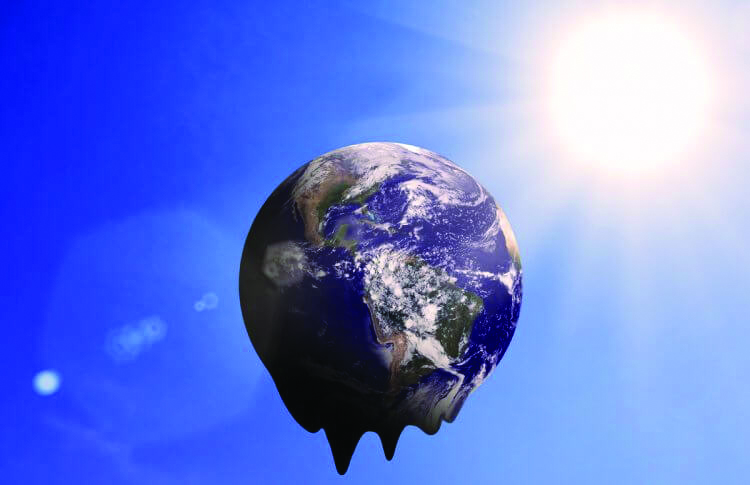Nikunja Bihari Sahu
Although the Earth’s climate has always been changing owing to various natural and geological factors, the change has been faster over the last century as a result of human activities. Deforestation, shifting cultivation, mining, industrialisation and urbanisation are all responsible for this unprecedented trend. A rise in carbon dioxide emissions in the atmosphere from industrial processes and practices has played a key role in the change of climate on our planet. The result has been catastrophic.
Major economic sectors such as agriculture, forestry and fisheries are under severe strain, affecting lives and livelihoods of people at various places. It has also pushed many plant and animal species to the brink of extinction. Further, it will leave its imprint in the form of intensified heat wave conditions, soil salinity, degradation of fertile lands, habitat destruction, reduction of crop yield and loss of valuable forest produce. Developing countries worldwide, in particular, will bear the brunt of climate change.
In India, climate change has been affecting several climate sensitive sectors such as agriculture, forestry, fisheries and animal husbandry on which nearly two-thirds of the population depends directly for subsistence. It is estimated that more than 50 million people will be affected by coastal flooding from sea level rise. Two-thirds of agricultural land will be affected by drought and about one-fifth by flooding. Cities such as Mumbai and Kolkata will be mostly affected by sea level rise and coastal flooding. Rapid deforestation in the Himalayas will pose a serious threat to the ecological balance of the Indo-Gangetic plains. About 30 per cent of the land will be affected by drought as states including Andhra Pradesh, Odisha, Rajasthan, Jharkhand, and Bihar will reel under severe water crisis and drought like conditions. Regions in Mumbai and Kerala will be waterlogged. About 142 districts in Gujarat, Rajasthan, Punjab, Haryana, Uttar Pradesh, Karnataka, Andhra Pradesh and Tamil Nadu will be affected by soil salinity. There are visible vegetation shift patterns in the Northeast, Himachal Pradesh and the Western Ghats along with signs of biodiversity loss. Several animals, including yak, house sparrows, Indian bustards, and vultures, and plant species including red sandalwood, musli, Malabar mahogany and ebony are becoming endangered.
Crops such as rice, wheat, maize, millets and pulses will be affected. The floods and landslides in 2013 in Uttarakhand, the floods in Chennai in 2015 and the drought in several parts of the country in 2016 were some examples of nature’s fury over India. Extreme events such as droughts, floods and heat wave conditions are the most tangible and immediate impacts of climate change. In 2018-19, 2,400 Indians lost their lives to extreme weather events and the India Meteorological Department (IMD) predicts that the events will be more severe in both frequency and intensity in future. According to the World Bank, central districts in India are the most vulnerable to climate change because they lack the infrastructure and are largely agrarian, having experienced the maximum number of farmer suicides in recent years. In these districts, the World Bank projects that the per capita GDP could shrink by nearly 10 per cent by 2050 owing to climate change.
Stringent laws are required to be enacted at global, national and state levels to adapt to climate change patterns. The Paris Agreement signed in 2015 requires all nations to join hands and take necessary measures to fight climate change. At the individual level, our mantra should be ‘Think Globally and Act locally’.
We should follow eco-friendly and energy saving practices in daily life. We should conserve our resources (including water) and try to explore non-conventional and renewable sources of energy. Various local groups, NGOs and students in particular should come forward to sensitise common people about the impact of climate change in our lives and livelihoods.
The writer is education officer, Dhenkanal Science Centre.
